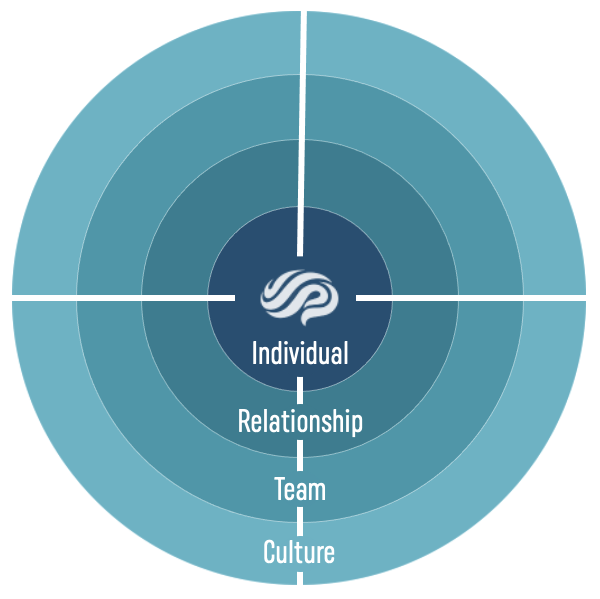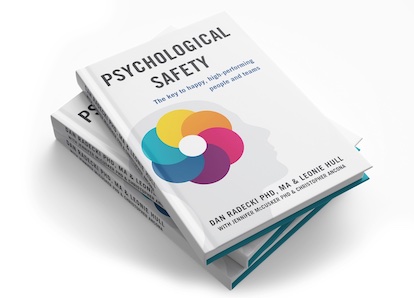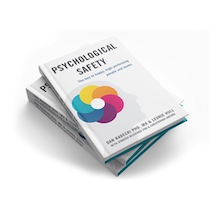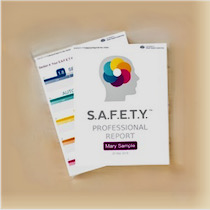Psychological safety is a buzz phrase these days, even though the concept has been around for over 8 decades. The renewed interest in this phenomenon was aided by work done by William Khan and then extended by Amy Edmonson in the 1990’s.
However, once Google published their research on psychological safety as one of the key factors for high performing teams in 2014, the field exploded. Seeing the unmet need in the corporate world, numerous groups jumped on the bandwagon to identify ways of building psychological safety within the team setting. As a behavioral neuroscientist, this was rewarding, since the neuroscience community has long known about the impact of psychological or social stress on our emotional, cognitive and physical wellbeing.
However, it was clear that the field wasn’t taking a scientific approach in the process, but rather focused on experiential or anecdotal information when trying to build psychological safety. Equally as important was the fact that the work being done was overwhelmingly addressing it at the level of the team, as opposed to the individual. This was puzzling, since a team is a function of the individual members and if emotional wellbeing is challenged at the individual level, then psychological safety of the team would no doubt suffer.
Psychological Safety 4-Levels of Focus & Responsibility
In 2014 the Academy of Brain-based Leadership was created with a goal of helping solve this quandary. We saw an opportunity to help inform the field by taking a systematic approach to building psychological safety, which starts with the individual.

By creating a model derived from the neuroscience literature we were able to develop offerings which enhanced individual self-awareness around psychological safety triggers in their world, including how these triggers drive their behaviors, biases and interactions with others.
With this in place, they are then able to better collaborate with others and appreciate diverse perspectives, which consequently had a beneficial impact on team dynamics and ultimately the culture of the wider community or organization. In our experience, this systematic approach of tackling psychological safety at the self-relationship-team and culture levels with a neuroscience lens has been a logical and successful paradigm. Why?
We know that based upon the way our brain is wired, we cannot focus on others’ until we feel safe. Our brains have evolved to focus on threat and danger, so if I don’t take care of my psychological stress triggers then the team dynamic falls apart for me. So, from a neuroscience standpoint, focusing on the “self” is the necessary starting point. The additional perk to this is that once a person creates this self-awareness around their triggers it can not only enhance their well-being at work, but in their daily lives as well. You take your brain everywhere you go, so being able to understand and manage those triggers not only makes it easier to be creative and collaborative in the office, but helps you better understand your family members or that clerk in the supermarket with a vastly different political ideology than you.
Once you have a handle on your own psychological safety, you can now be more objective and open-minded in your relationships with team members as the veil of bias is less blinding. This leads to more positive collaborations and starts to build a team that feels valued for who they are, and words like “vulnerable” and “belonging” start to emerge as ways to describe team members.
Finally, with this enhanced sense of psychological safety at the team level a shift in the organizational culture is possible, whereby the team serves as a blueprint for wider uptake of the process.
A systemic approach to managing ISO Psychosocial Risk
This systematic approach of first tackling psychological safety at the individual level is supported by recent guidance, particularly ISO 45003. If you’re not familiar with it, ISO is the International Organization for Standardization and is an independent, non-governmental international group composed of experts from 168 countries who share knowledge and develop consensus-based standards to support innovation and provide solutions to global challenges. Their most recent standard involves mental health in the workplace and specifically calls out psychological safety and health as a responsibility of employers and lays out specific guidelines to manage psychosocial risks. A key aspect of this guidance is that psychological safety isn’t simply the responsibility of a leader, but rather that all employees need to take accountability for proactively managing their own psychological safety. In our experience, this is critical, as employee or team psychological well-being cannot be the sole duty of a leader.
Another key takeaway from the ISO 45003 is the need to have accountability and reinforcement to truly build and maintain psychological safety on a team. This means simply creating education and awareness of the need for psychological safety won’t suffice. Individuals need to make a commitment to maintaining this safety for themselves and others, while leaders and organizations need to have sufficient tools, metrics and processes in place to proactively monitor and manage psychological safety. This also seems to be an area of unmet need within the team psychological safety space, and that’s where ABL provides support, in the form of a validated assessment, leader toolkits and ongoing “safety checks” to diagnose any issues before they escalate.
A comprehensive approach like this is important because we know that psychological safety is an incredibly complex and variable phenomenon and therefore takes sustained effort to build and maintain it within a team. In future blogs, we will dig deeper why psychological safety has emerged as such a globally recognized unmet need in our world and explore how an approach rooted in neuroscience can help create psychologically safe individuals, teams and organizations.
To learn more about ABL’s system for building Psychological Safety and managing ISO Psycho-social risk and the associated toolkits, diagnostics and solutions for individuals, teams and organizations contact us.













